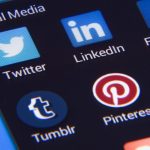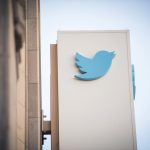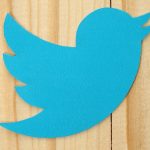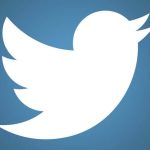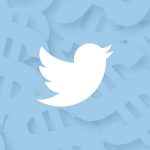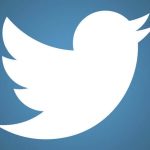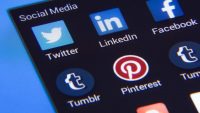A Rare Bird: These Are The Potential Scenarios For Twitter’s Future
It’s the latest guessing game in Silicon Valley: What will happen to Twitter? Though the company continues to grow its revenue, losses are mounting and it hasn’t meaningfully increased its user base in the last year. It’s pivoted by marketing itself as a hub for live news and entertainment, with some buzz surrounding its NFL and debate live streams, but it’s still too soon to tell if that transformation will work. A month ago, it was being actively pursued by Disney, Google, and Microsoft, however they all lost interest and now Salesforce seems to be its last potential suitor, causing its stock to tumble in value below the pre-rumor price.
But in the end, the business world loves a Cinderella story and in recent days, there have been some glimmers of hope for the flailing company as its stock price has inched upward. Some optimistic analysts even believe that it may still be possible for it to forge ahead as an independent company. Twitter is at a crossroads and there are only a few potential scenarios for its future.
“There are a couple of roads to go down when you’re faced with this opportunity. One is to go the fire sale route” and sell itself to a willing buyer, says Forrester Research analyst Melissa Parrish. Alternatively, she says, it could turn itself around using its stores of capital or continue to flounder indefinitely.
A Sell-Off
In a blog post, John Hempton, chief investment officer at Bronte Capital, laid out a case for why an “aggressive financial buyer” should scoop up Twitter rather than a strategic investor like Disney or Google. Someone, he argues, needs to cut costs and boost Twitter’s operating margins.
Between 2013 to 2015, Twitter raised annual revenues from $665 million to $2.2 billion; and revenues are still going up. “Costs have gone up commensurately,” writes Hempton. “Losses seem stubbornly stuck at half a billion per annum. That is real money—just burnt—and burnt by a business that is already established.” Building up losses isn’t a problem in and of itself, he writes. Amazon, for example, grows losses. However, big expenditures have to amount to something valuable like expansion into new product categories in order to justify them.
For all the money Twitter is spending, its product hasn’t changed a lot. Harassment and spam continue to be a problem for some users and the actual experience is still limited to posting 140-character messages to a social stream. But some of its recently forged partnerships could open up promising revenue streams.
Turnaround
Since its inception, Twitter has also been devoted to real-time conversations. Events like the Olympics, the World Cup, and the U.S. election cycle have proven to produce meaningful engagement on the platform. There were 35.6 million tweets about the brutal World Cup match between Germany and Brazil alone. To further the focus on live, Twitter has landed a deal with the NFL to live-stream Thursday-night games. “Actually focusing on the technology they have that facilitates real-time communication and news sourcing and video watching and all of that—that to me was a really interesting concept,” says Parrish. Most people on Twitter don’t tweet a lot, but when they do more than half the time it’s about news, according to a Pew Research study from 2015. If Twitter becomes more of a platform for news and entertainment consumption and reduces the pressure on users to tweet, it might actually draw more people in.
Already, Twitter could use Periscope, a live-streaming app it acquired in 2014, to help push more such content to the platform through a deeper integration. For instance, Twitter could feature curated Periscope streams much the way it does for NFL games. That in turn could help make the case to media companies looking to capture mobile and streaming audiences fleeing traditional cable that Twitter is the place to be. People are already live-tweeting through their favorite shows; it seems to reasonable to assume that they might also watch them there.
Twitter CEO Jack Dorsey is all-in on this opportunity. In a recent upbeat memo to staff obtained by Bloomberg, he said, “People choose us for news because we’re the fastest. Fastest to get news, and fastest to share news with the whole world. Now let’s strive to be the first. The first place people check to see what’s happening…and the first place to break what’s happening. In the moment LIVE, or a fast recap of what we know so far…what matters.”
But in order for Twitter to become a sustainable independent company, it will need to clean house. As Hempton points out, the company needs to cut or make better use of its costs. It also needs to build better tools for detecting and squashing abuse in order to stop users from ditching the platform. Most importantly, it will have to turn around its reputation. A recent 3,000-person survey from digital marketing analytics firm LivePerson indicates that only 2% of people ages 18-65 consider Twitter a must-have app. The same survey says only 3% of the millennials interviewed felt that Twitter was an important app. Twitter needs to figure out a way to recapture the public’s attention.
Flounder On
Of course, Twitter might not be able to tighten up its business. In which case, it could continue to occupy this strange space as both a media company and a social network with no firm identity. Other companies have similarly suffered from such a crisis. Yahoo, for example, never quite figured out what its focus should be after Google surpassed it as the leading site for online search. There were questions about whether Yahoo was a media company or a tech company right up until it was acquired by Verizon this year. As Twitter digs deeper into media, it too faces this question.
There’s a chance its trajectory will be more like Apple’s, which also had a midlife crisis in the 1990s. Apple suffered in the years after CEO and founder Steve Jobs was fired, right up until he regained control of the company. Twitter’s Dorsey was similarly dethroned and re-crowned. But a year after retaking Twitter’s helm, he has yet to define a path forward for the company. By comparison, Jobs was able to make meaningful progress in mere months, according to writer Frank Rose.
Whatever is to be, hopefully there will be a glimmer of what’s to come in Twitter’s next earnings statement, which is coming at the end of the month.
Fast Company , Read Full Story
(57)


